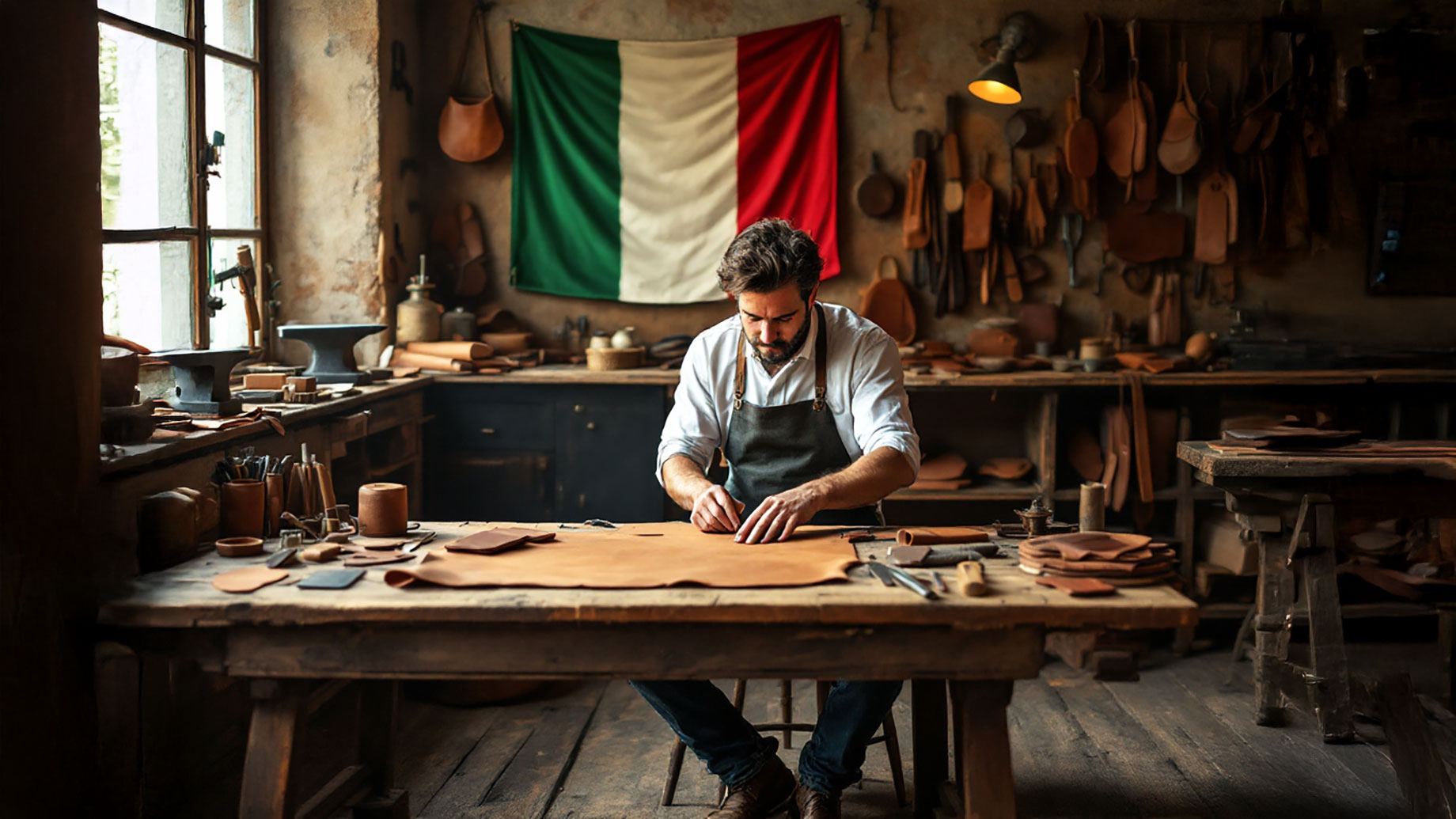
In the shadow of ancient architecture and amid rolling Tuscan hillsides, Italian leather artisans continue a tradition that spans centuries. Their workshops—often family-owned for generations—remain the birthplace of the world’s most coveted leather goods. This isn’t merely manufacturing; it’s the preservation of cultural heritage through meticulous handwork and unyielding standards.
The Geographical Soul of Italian Leather
Italy’s leather-making excellence isn’t uniform across the peninsula, but rather a mosaic of regional specialities, each with distinctive characteristics and historical significance.
- Florence and Tuscany stand as the undisputed epicentre, where the banks of the Arno River provided tanneries with flowing water for centuries. Here, vegetable tanning methods dating back to medieval guilds transform raw hides into the warm, amber-toned leather that patinas beautifully with age.
- Naples brings its theatrical flair to leather craftsmanship, particularly in glovemaking. Neapolitan artisans cut leather so precisely that it forms a second skin around the wearer’s hand—a skill passed through generations of local families.
- Milan merges traditional techniques with avant-garde design, producing leather goods that grace international runways and define contemporary luxury.
- The Marche region, less heralded but fiercely proud, specializes in footwear that combines comfort with uncompromising construction.
Beyond the Surface: What Makes Italian Leather Exceptional
The superiority of Italian leather stems from several interconnected factors:
- Sourcing philosophy emphasizing premium raw materials, often from European cattle raised in environments that minimize hide damage
- Time-intensive tanning methods that forego industrial shortcuts
- Natural tanning agents like tree bark, vegetables, and tannins that create eco-friendly, breathable leather
- Hand-selection of hides, with master craftspeople identifying imperceptible flaws
- Multi-generational knowledge transfer that cannot be replicated through formal education alone
The Craftsman’s Arsenal
Within these storied workshops, tools become extensions of the artisan’s hands:
- The skiving knife, razor-sharp and wielded with surgical precision to thin leather edges
- Bone folders for creating crisp, permanent creases without damaging the material
- Diamond-tipped awls that pierce stitching holes without tearing fibres
- Hand-forged brass stamps for maker’s marks—often centuries old and inherited through family lines
- Wooden mallets with heads polished by decades of use
The Renaissance of Business Essentials
While handbags and footwear often capture the spotlight, Italian leather craftsmanship shines equally in professional accessories. The boardroom becomes another venue for displaying this refined aesthetic.
Executive desk sets, document holders, and the custom leather padfolio represent the intersection of functionality and statement-making design. These pieces transform mundane business interactions into tactile pleasures, with hand-stitched edges and perfectly balanced proportions demonstrating the maker’s commitment to excellence even in the smallest details.
Sustainability: Ancient Wisdom Meets Modern Responsibility
Today’s Italian leather workshops navigate the delicate balance between tradition and environmental consciousness. The industry’s best practitioners embrace:
- Vegetable-tanned processes that avoid chrome and heavy metals, resulting in biodegradable products that age gracefully
- Zero-waste workshops where leather scraps become smaller goods, with nothing discarded
- Water conservation systems that honour the resource-intensive nature of tanning while minimizing environmental impact
- Transparent supply chains that allow consumers to trace materials from farm to finished product
The Collector’s Guide: Discerning Authenticity
For the connoisseur seeking genuine Italian craftsmanship, several hallmarks reveal authenticity:
- Edge painting applied by hand in multiple thin layers rather than a single thick coat
- Stitching that follows the natural contours of the design without shortcuts at corners
- Slightly irregular hand-burnished edges that reveal human involvement
- The distinctive aroma of vegetable-tanned leather, earthy and complex rather than chemically sharp
- Hardware that’s weighty and substantial, often brass-based and hand-polished
Beyond Status: The Philosophy of Italian Leather
The true value of Italian leather transcends its luxury categorization. These objects embody a philosophy that challenges modern disposability. Each piece tells a story of patient creation and improves with use—developing a rich patina that documents its journey with its owner.
In a world of planned obsolescence, Italian leather goods stand as quiet rebels against the transient. They are investments in permanence, companions designed to accompany their owners through decades rather than seasons.
The Italian leather tradition isn’t merely surviving in the twenty-first century—it’s experiencing a renaissance as discerning consumers rediscover the profound satisfaction of objects made with integrity, designed to last generations, and created with reverence for both materials and methods.
